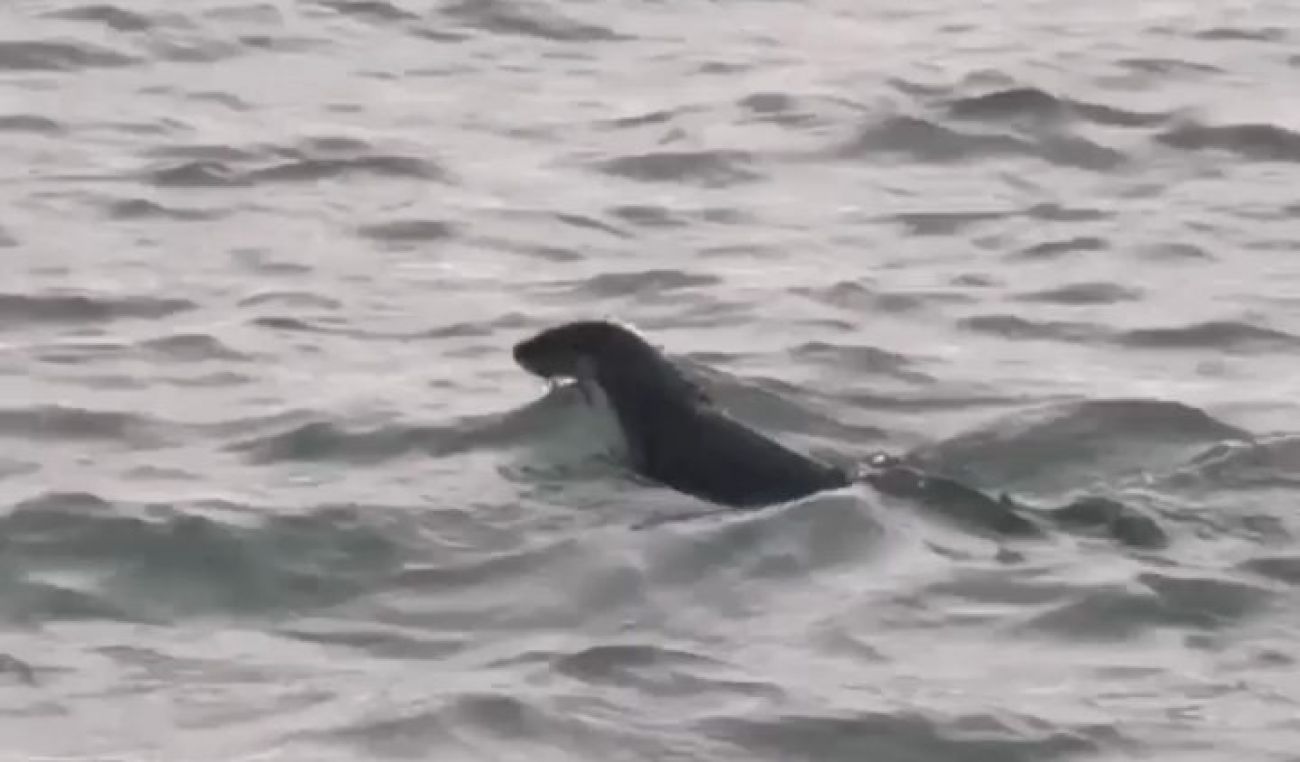River otters return to the Detroit River, sign ecosystem is healing

On the cool morning of April 25, doctoral student Eric Ste Marie from the University of Windsor’s department of integrative biology went out for a walk with his partner along the Detroit River prior to an anticipated long day in his lab. Much to his surprise, he saw an animal pop its head out of the water. It was too big to be a mink and, as it dove, he noticed that it did not have a flat beaver tail. Ste Marie ran out to the end of a pier beneath the Ambassador Bridge to get a closer look to check, and there it was: a river otter.
“It was the last thing I was expecting to see,” Ste Marie said.
The North American river otter is a semi-aquatic mammal, meaning it lives partly in the water and partly on land. They can grow to 3-4 feet and can weigh 11-31 pounds. River otters can stay underwater for as many as eight minutes and have long whiskers which they use to detect prey in dark or cloudy water.
They have clawed feet ideal for grasping onto slippery prey and thick, protective fur to help them keep warm while swimming in cold waters. River otters are built for swimming – they have short legs, webbed feet, and a long, narrow body and flattened head for streamlined movement in the water. They are well known for playful behaviors that actually help them learn important survival skills such as hunting techniques, how to mark their territory with their scent, and how to develop social bonds.
“River otters were quite common in southeast Michigan, including the Detroit River, up through the arrival of European explorers and fur traders,” said Gearld P. Wykes, a historian from the Monroe County Museum System. “During the fur trade era, they were much sought after for their fur, along with beaver. Based on historical records, river otters were likely extirpated from the Detroit River in the early 1900s.”
In 1986, the Ohio Department of Natural Resources reintroduced river otters into high water quality rivers and streams in eastern Ohio. The river otters thrived. As their population grew, they began to move westward – what scientists call expanding their range. By the early 2000s, they had found a home in western Ohio, particularly near Cedar Point and Ottawa National Wildlife Refuge, just east of Toledo.
But the otters were not done. In 2019, river otters were discovered across western Lake Erie at Point Pelee National Park in Leamington, Ontario, the first time they had been seen in the national park since it was established in 1918.
Biologists studying the Detroit River and resource managers have been excited about the possible range expansion of river otters into the Detroit River. There have been a few anecdotal reports from citizens, but no photographic or videographic proof until Ste Marie was greeted with that ecological surprise on the morning of April 25.
“The Detroit Zoo is so excited to hear that the Detroit River is now clean enough for river otters and is committed to working with regional partners to further conservation efforts, including for river otters,” said Elizabeth Arbaugh, curator of mammals at the Detroit Zoological Society.
The Detroit Zoo maintains the 2,500-square-foot Edward Mardigian Sr. River Otter Habitat, which incorporates indoor and outdoor living environments. The zoo also performs research on the effects of habitat modification on river otter behavior and substrate use.
River otters are considered an indicator species, and their return to the Detroit River after an absence of more than 100 years is a hopeful sign of improving watershed conditions.
“As a local resident, it makes me hopeful that the Detroit River ecosystem is healing and that soon these types of sightings may become more common,” Ste Marie said.
This article originally was published April 29 on Great Lakes Now and is reprinted with permission.
John Hartig is a board member at the Detroit Riverfront Conservancy. He serves as a Visiting Scholar at the University of Windsor’s Great Lakes Institute for Environmental Research and has written numerous books and publications on the environment and the Great Lakes. Hartig also helped create the Detroit River International Wildlife Refuge, where he worked for 14 years as the refuge manager.
Michigan Environment Watch
Michigan Environment Watch examines how public policy, industry, and other factors interact with the state’s trove of natural resources.
- See full coverage
- Subscribe
- Share tips and questions with Bridge environment reporter Kelly House
Michigan Environment Watch is made possible by generous financial support from:
Our generous Environment Watch underwriters encourage Bridge Michigan readers to also support civic journalism by becoming Bridge members. Please consider joining today.
See what new members are saying about why they donated to Bridge Michigan:
- “In order for this information to be accurate and unbiased it must be underwritten by its readers, not by special interests.” - Larry S.
- “Not many other media sources report on the topics Bridge does.” - Susan B.
- “Your journalism is outstanding and rare these days.” - Mark S.
If you want to ensure the future of nonpartisan, nonprofit Michigan journalism, please become a member today. You, too, will be asked why you donated and maybe we'll feature your quote next time!






